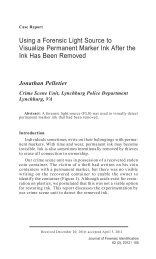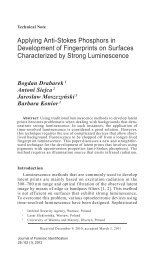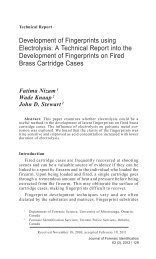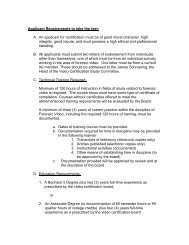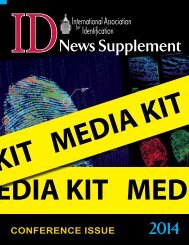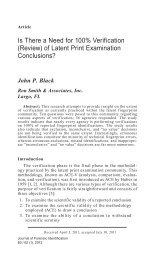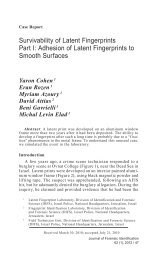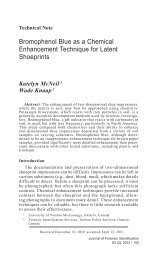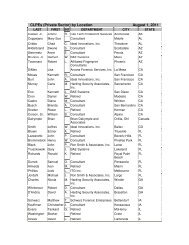Individualization Using Friction Skin Impressions: Scientifically ...
Individualization Using Friction Skin Impressions: Scientifically ...
Individualization Using Friction Skin Impressions: Scientifically ...
Create successful ePaper yourself
Turn your PDF publications into a flip-book with our unique Google optimized e-Paper software.
system (AFIS), computerized comparisons have been conducted<br />
against millions of finger- and palmprints twenty-four hours a<br />
day, resulting in millions and possibly billions of comparisons.<br />
In no single instance throughout the course of the history of<br />
applying the science has empirical data been shown to disprove<br />
the uniqueness of friction ridge skin.<br />
<strong>Individualization</strong> Testimony<br />
Following the latter discussion of the development of the<br />
scientific premise that friction ridge skin is unique and the<br />
theory explaining the underlying causes for that uniqueness,<br />
the critics still argue that, despite the medical, mathematical,<br />
and empirical data available, friction ridge skin still has not<br />
been proven, in the most absolute sense, to be unique [6, 7, 9,<br />
11–16]. It is argued that without proving uniqueness, in the most<br />
absolute sense, the use of friction ridge skin for personal identification<br />
and making claims of “individualization to the exclusion<br />
of all others” is unscientific and therefore not acceptable by the<br />
general scientific community [6, 7, 9, 12, 16]. However, this<br />
assumption is neither accurate nor based on any valid logic. In<br />
the late 1980s, when scientists were faced with similar questions<br />
of proving uniqueness of the human genome, it was stated by<br />
the National Research Council (NRC), formed by the National<br />
Academy of Science (NAS), which is recognized as one of the<br />
most prestigious scientific organizations and representative of<br />
the general scientific community, that:<br />
If a sufficient set of DNA characteristics is measured, the<br />
resulting DNA profiles can be expected to be unique in<br />
all populations.... Of course it is impossible to establish<br />
uniqueness by profiling everyone in the world, but theory<br />
and experience suggests that this uniqueness is attainable<br />
in forensic typing. Indeed, some scientists would argue that<br />
the existing panoply of characteristics is already sufficient<br />
to permit unique identification in many cases. For example,<br />
it has been suggested that a probability much less than the<br />
reciprocal of the world’s population is a good indication of<br />
uniqueness. The committee has not attempted to define a<br />
specific probability that corresponds to uniqueness . . . but<br />
urges that research into new and cumulatively more powerful<br />
systems continue until a clear consensus emerges that<br />
DNA profiles, like dermal fingerprints, are unique. [3]<br />
Journal of Forensic Identification<br />
62 (1), 2012 \ 67



